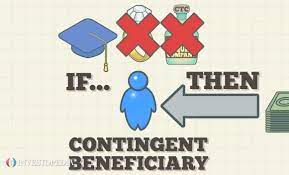Divorce time is a trying time, even if both partners feel it is in their best interests to separate. It can become emotionally charged and even violent when other issues are involved, such as asset division and child support. Alimony is frequently a contentious issue in divorce cases. Whatever the reason, the goal of this maintenance is to examine the former couple’s incomes. The likelihood of receiving alimony increases with the size of the income disparity. Join us, in this article for a better understanding of what alimony taxable is all about and how it is taxed in Texas.
What Is Alimony in Definition?
The length of the marriage and the couples’ probable present and future salaries determine how much the maintenance of the other spouse must be in payment and for how long.
This level of maintenance varies from state to state. However, this is typically granted if a marriage separates or gets a divorce after ten years. Unless both partners have equal earning capacity. If the earning capacities of the two parties are not equal, the lower-earning spouse will probably be entitled to alimony payments. This can be done permanently or perhaps temporarily. If the marriage is relatively new or if the annual incomes of the spouses are comparable, alimony taxable payments may not be granted.
In the definition of alimony, it is a court-ordered payment within a separation or divorce agreement to a spouse or former spouse that should be granted. However, in order to support them financially, this is paid to the spouse who has a lower income or, in certain situations, no income at all.
In some areas, this spousal maintenance may be granted to either a husband or a wife. Also. in typical heterosexual marriages with children, the guy has traditionally been the primary provider, and the woman may have given up her work to raise the kids, which places her at a financial disadvantage following a separation or divorce. Many states’ laws mandate that a divorced spouse has the right to maintain the standard of living they enjoyed throughout their marriage.
Types of Alimony
State-to-state variations in alimony options are possible. There are five, given an example from California:
#1. Temporary Maintenance
This can cover both divorce-related fees and ongoing living expenses. It is paid during the divorce process and ends when the divorce is finalized.
#2. Permanent Maintenance
This continues to be paid on a monthly basis. Until the death of either spouse or the remarriage of the spouse with a lower income.
#3. Rehabilitation Maintenance
It is paid while the lower-earning spouse tries to improve their work prospects through education or training or while conducting a job search. And it ends when the payee becomes self-sufficient or after a set period of time.
#4. Reimbursement Maintenance
It is a one-time payment made to cover a spouse’s lower-earning partner’s costs for things like college or job training.
#5. Lump-sum Maintenance
When one spouse doesn’t desire any property or valuable goods from the marital assets, this is ordered instead of a property settlement.
Child support vs Alimony
Child support and alimony should not be confused. While child support is paid to a child’s custodian and is expressly intended to sustain one or more children from a broken relationship or marriage, alimony taxable payments are made to a spouse or former spouse for their upkeep. Typically, child support ends when a child is 18 years old. You should be aware that these maintenance and child support obligations cannot be canceled in bankruptcy.
Who Receives Alimony?
If a couple is divorced and cannot afford to support themselves independently, the father may be required to provide maintenance payments to their ex-wife. Additionally, alimony might be paid to an ex-husband. When there is a significant income discrepancy between spouses and the couple has been together for a long time, maintenance money may be granted.
A judge would probably provide taxable alimony to the husband during a divorce. only if the wife is a lawyer earning six figures per year and the husband earns the minimum wage. Even so, there are several factors to take into account when determining an alimony award. Just because one party earns less than the other doesn’t automatically entitle them to alimony. The spouse who must care for three young children will probably obtain taxable alimony. Since judges make their decisions on future earning potential. This is because they must prioritize child raising over working.
How is Child Support Decided?
A judge will consider several factors when determining taxable alimony. The judge will evaluate the earning potential of both parties and decide if one spouse has the resources to pay for maintenance. The spouse who could receive alimony must have a proven need for it. In a divorce case, alimony is not automatically awarded.
How Long Does Taxable Alimony Last?
Depending on what the judge determines, alimony may be a temporary or long-term agreement. A spouse may receive maintenance payment in the form of a one-time lump sum or on an ongoing basis. Maintenance payments typically come to an end if the recipient spouse remarries, cohabitates, passes away, or if a major life event like winning the lottery or landing a high-paying job occurs.
What to Do if The Alimony Imposed By the Court is Not Being Paid
If maintenance money has been mandated by a judge, it must be paid. Then the payer may be held liable for nonpayment. You can ask the court to hold your spouse in contempt if they have been ordered to pay alimony but are refusing to do so. Penalties and fines may follow this.
Your spouse can also be obliged to pay retroactively what was owed in the past. But wasn’t paid in order to make up for missed maintenance payments. The court will arrange a hearing when you file a motion. Alerting that your ex-spouse has not been paying maintenance money. During this hearing, the judge will meet with all parties to ascertain the reason why one spouse is refusing to pay the taxable alimony and to determine the best course of action.
How to Avoid Taxable Alimony
#1. Be Willing to Negotiate
If paying maintenance money on a regular basis is beyond your financial reach, you might be able to minimize or do without it by giving up assets in other areas.
For instance, you might decide to grant your spouse a larger percentage of the assets in your retirement account. Or permit them to live there while you look for another place to live. You and your husband may be able to reach an arrangement through negotiation that does not call for maintenance.
#2. Request a Career Appraisal
In some cases, maintenance money is determined in part by the spouse’s prospective future income. Your spouse might be found to be able to land a higher-paying job by a vocational evaluator. This could shorten the time required for the process.
For instance, while your husband looks for more lucrative employment, you might only need to pay alimony for a short while.
#3. Keep Track of the Status of Your Spouse’s Relationship.
If you can prove that your husband had an affair during the marriage, you might be able to avoid paying maintenance money. However, some jurisdictions require you to show that marital funds were used for the affair. For instance, you might not be able to pay alimony if your husband paid for trips out of town with the affair partner or offered money to the partner to help with costs.
#4. Keep Tabs on How Well You and Your Partner are Getting Along.
You might be able to avoid paying alimony if you can demonstrate that your husband had an affair while you were married. Some authorities, nevertheless, demand proof that money from the marriage went toward the affair.
#5. Obtain Proof that Your Ex-Partner is not in Need of Maintenance Money.
While it is not usually the case, it does happen occasionally when a marriage is having trouble. Also, you can see it when a divorce is being filed.
You might be able to show that your partner has enough assets to not need the maintenance money. If you discover that they have been hiding money in hidden savings accounts or have gained money through investments without telling you. Due to the fact that standard alimony payments and divorce alimony laws vary from state to state and depend on your specific circumstances.
If you have specific concerns about which states are the best for this payment, it is always advisable to speak with an alimony lawyer.
How is Alimony Calculated?
There is no set formula to determine the amount of alimony because each state has its own unique alimony rules. Some spouses may be able to agree on the maintenance money. But if they are unable to, a judge will decide how much is awarded.
A judge will determine how much alimony to award based on the current income of each spouse. Also, the ability of the paying spouse to pay, and the needs of the receiving spouse. For example, the court will evaluate the economic disparity between the two spouses and take into account the earning potential of the prospective spouse.
The length of the marriage is another factor in determining alimony. Longer marriages are more likely to include one spouse paying alimony to the other. When determining the maintenance money, a judge will likely take into account both couples’ expenses, any child support granted to the receiving spouse, and parenting plans.
Remember that alimony is different from child support. In that, child support is intended to help the former spouse who earns less by covering their basic needs, whereas alimony is meant to help the former spouse who earns more.
How Does Alimony Work?
People frequently have inquiries like, “How does alimony work?” Likewise, “When does alimony begin? Alimony is given in situations where a divorce or separation is imminent.
The receiving spouse’s capacity for self-support and financial independence will be taken into account by the judge. Depending on the circumstances of the couple, an alimony award may be either temporary or permanent.
A judge may decide that one spouse be allowed to keep ownership of the marital home. For example, alimony may take the form of a property transfer, such as a lump sum payment made all at once. Periodic alimony means that one spouse pays the other a fixed amount of money each month. The most common kind of alimony is this. The judge presiding over the divorce or separation case ultimately decides whether or not to award alimony.
Alimony is Taxed
The person taxed on the alimony is no longer permitted to deduct any portion of alimony. Or separate maintenance payments related to any divorce or separation agreements dated January 1, 2019, or later. The recipient of alimony is exempt from having to declare the alimony payments as taxed income.
New modifications to divorce agreements signed before January 1, 2019, are likewise impacted by the Tax Cuts and Jobs Act. Changes to the original agreement, in particular, may modify how alimony payments are taxed. Payments made under your divorce agreement will be taxed in accordance with the new regulations. Only if your divorce documents are changed to specifically state that the deletion of the alimony deduction applies.
For agreements made before January 1, 2019, the alimony taxed payments are normally deductible by the payor and taxable income to the recipient.
Where on Your Taxed Return Should You Disclose Alimony?
If your divorce is finalized before January 1, 2019, it will be simple to declare alimony received and taxed on your tax return. On Form 1040, Schedule 1, you merely enter the amount of alimony taxed or received.
- You should enter the amount on line 2a if you are the recipient of alimony payments. You must provide the date of the initial divorce or separation agreement on line 2b. Additionally, you must provide the alimony payer with your Social Security number in order to avoid a $50 fine
- You should enter the amount taxed on line 18a if you are the individual paying alimony. Lines 18b and 18c of the form require alimony payers to enter the recipient’s Social Security number and the date of the divorce or separation agreement, respectively. There could be a $50 fine if the recipient’s Social Security number is omitted.
A person’s federal income tax returns do not need to include information about alimony payments. Only if their divorce agreement is dated January 1, 2019, or later. You will be subject to regular fines and interest payments for underreporting your tax. And if you are obligated to include alimony income on your tax return but forget to do so.
Tax Reduction Strategies for Divorcing Couples
Planning your divorce separation agreement can assist you in avoiding paying unnecessary taxes in the future if you’re going through a divorce. Although alimony is no longer deductible or a taxable income. But additional tax consequences may still have an influence on your future tax returns.
#1. Making Dependents Claim
There are numerous considerations when claiming a dependent on your tax return. The defendant will typically be claimed by the custodial parent. Albeit this may not always be the same person who is granted legal custody. For tax reasons, the parent whose home a child sleeps at the majority of the time in a year is considered the custodial parent.
The non-custodial parent may occasionally claim the child as a dependency if they satisfy the following four conditions:
- The couples are:
- Legally separated or divorced with a divorce decree or separate maintenance
- In accordance with a formal documented separation agreement
- During the latter six months of the year, they always lived separately.
- Over half of the child’s support over the year came from their parents in this case.
- More than half of the year is spent with one or both parents caring for the youngster.
- For divorces that occurred after 1984, the custodial parent signs Form 8332 stating they will not claim the child as a dependent for the year and the non-custodial parent attaches the written statement to their return.
#2. Choosing Assets Carefully
The division of assets during a divorce typically does not result in a taxable event. Since taxes on gains or losses are typically not due at the time of the divorce. However, if you obtain a marital asset and later decide to sell it for a profit, you will be required to pay taxes on the entire amount of the asset’s appreciation, not just the portion that has occurred since the divorce. It is crucial to carefully select the assets you want in a divorce for this reason.
How Is Alimony Taxed?
The laws governing alimony taxation have changed. The Internal Revenue Service (IRS) previously taxed and treated alimony payments as taxable income for the recipient while treating them as a tax-deductible cost for the payer. However, the Tax Cuts and Jobs Act of 2017 abolished the alimony tax deduction for divorce settlements finalized after December 31, 2018, as well as the requirement that recipients of alimony no longer incur federal tax on this assistance.
Alimony in Texas
In Texas, it might be challenging to obtain an alimony judgment directing one ex-spouse to support the other following a divorce. Even if a spouse satisfies the strict eligibility requirements, the amount and duration are probably strict.
A contract for support payments akin to alimony may be negotiated by a Texas couple who is dissolving their marriage. They can establish their own arrangement of alimony payment without being constrained by the stringent restrictions of Texas law by using a private contract. If no private agreement is reached, the divorce judge will make the decision regarding alimony.
In Texas, if a divorce is being considered, whether they are likely to be the obligee (also known as the receiver, recipient, or payee) or the obligor, should consult with an expert family law attorney concerning alimony.
Factors That Contribute to Alimony in Texas
The “nature, amount, length, and manner of periodic payments” of the award must be determined by the court taking “all relevant considerations” into account if the recipient satisfies the eligibility conditions of alimony in Texas. Although the court must take into account all relevant information, the Act outlines 11 particular considerations that must be taken into account, including:
- Marriage duration
- Marital misconduct
- Family conflict
- Homemaker contributions
- The other’s “education, training, or enhanced earning ability” as a result of the first party’s involvement
- Misappropriation of assets
- Age, employment history, income potential, mental and physical well-being of each spouse, etc.
Period and Value of Alimony in Texas
In Texas, if the payee’s capacity to work is not significantly hampered by a handicap, the care of the couple’s small child, or “another compelling barrier,” alimony may only be paid for the “shortest reasonable term” to enable the payee to earn enough to meet his or her minimum reasonable needs. The law also establishes exterior bounds:
- ten years for a union lasting at least thirty years
- Seven years for a 20–30 year marriage
- 5 years for a union lasting 10 to 20 years
- If qualification is depending on the family violence condition, five years for marriages that have lasted less than ten years.
Read Also: Are Tennessee Courts Easy To Get A Divorce In?
Eligibility of Getting a Taxed Alimony in Texas
In Texas, alimony is scarcely possible. The recipient’s property must, first and foremost, not be enough to cover his or her “minimal reasonable necessities.” In Texas practice, this means that the obligee would not be qualified for alimony if he or she is able to support a minimal standard of living on their own.
One of these four factors must be true in addition to being unable to provide for minimum reasonable needs:
- In the two years before the divorce filing or during the divorce proceedings, the payor was found guilty of family violence against the receiver or the recipient’s child (or granted deferred adjudication).
- Due to an “incapacitating physical or mental handicap,” the recipient is unable to generate enough money to cover his or her minimal reasonable demands.
- The beneficiary is unable to make enough money to cover her minimally reasonable demands because the marriage lasted at least ten years. Unless the payee has made a concerted effort to either earn enough money to cover his or her minimum reasonable needs or to acquire the necessary skills since separation and while the divorce has been pending, the law presumes that alimony is not suitable in this case.
- Because the payee is responsible for the couple’s child, who requires “substantial care and personal supervision due to a physical or mental condition,” they are unable to make enough money to meet their basic reasonable needs.
What Does It Meaning of Alimony?
Alimony is typically granted if a marriage separates or gets a divorce after ten years unless both partners have equal earning capacity. If the earning capacities of the two parties are not equal, the lower-earning spouse will probably be entitled to alimony payments, which may be made permanently or perhaps temporarily.
Who Pays Alimony in a Divorce?
If a couple is divorced and the husband and wife cannot afford to support themselves independently, he may be required to provide alimony payments to his ex-wife. Additionally, alimony might be paid to an ex-husband.
How Does IRS Know if You Are Divorced?
The IRS has the largest collection of personal information on American citizens ever made. If you file as (1) Single or (2) Head of Household, you must say that you are divorced.
Does Divorce Trigger an IRS Audit?
The IRS has three years after a divorce to check your finances during the marriage. This time period can be lengthened depending on how big the “difference” is or if there was “fraud.” If the difference is more than 25%, the review period, or “statute of limitations,” will be pushed back to 6 years.
Is It Better to Divorce before or after Retirement?
If you get a divorce before you retire, you also have more money choices. When a couple gets a divorce, their household income may drop by 23% to 41%. But if you still have a job, you can make up for this loss before you retire.
How long is alimony paid?
Depending on what the judge determines, alimony may be a temporary or long-term agreement. A spouse may receive alimony in the form of a one-time lump sum or on an ongoing basis (such as a monthly payment).
What Should I Not Say in an IRS Audit?
Do not lie or give false information. The IRS may ask you questions to which they already know the answers to see how much they can trust you. It’s best to tell the truth, but don’t go on and on and say more than is needed.
Related Article
- ANNUAL INCOME: Definition and Calculations of Gross, Net & Total Annual Income
- How To Get Credit For A Business: Best Effective Steps to Follow Now!!!
- ALIMONY: What Should You Know Before Going Through With It?
- HIGHEST COST OF LIVING CITIES: Top Most Expensive Cities
- WHAT MOTIVATES YOU: How To Answer This Tricky Interview Question
- How to Move to Another State: Step-by-Step Guide
- RULE OF 40: Meaning, SAAS, Calculations & All You Need (+ Best Tools)
- What Is Taxable Income Formula: Step By Step Calculation
- HOSPITALITY MANAGEMENT SYSTEM: Best System Software 2023
- Top Best 10+ BOOKKEEPING SYSTEMS FOR SMALL BUSINESS for 2023






